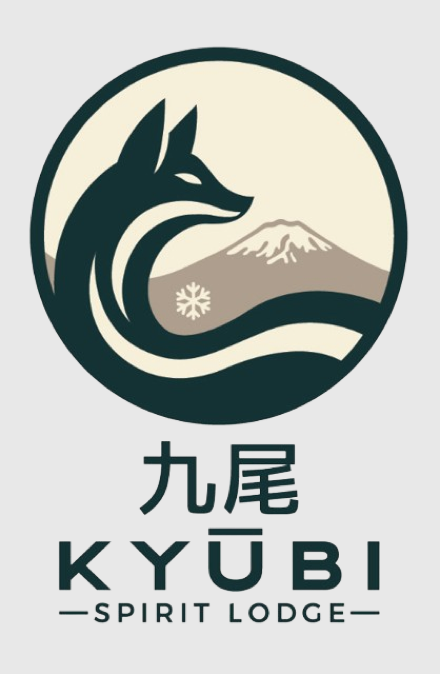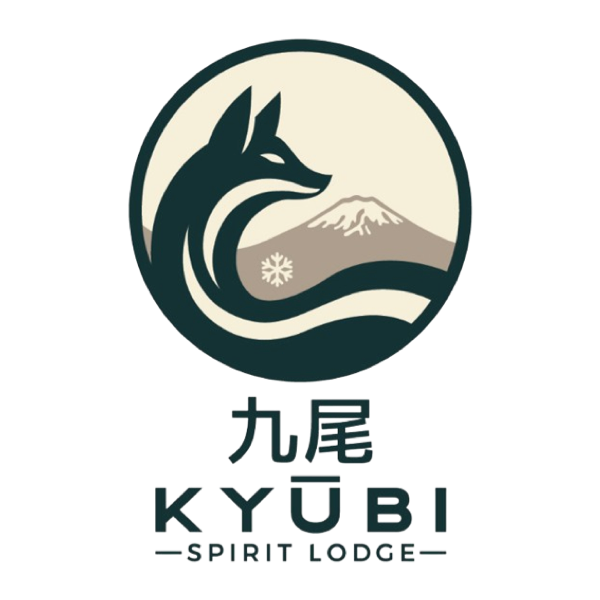
Asahiyama Zoo (旭山動物園, Asahiyama Dōbutsuen) is a celebrated zoological garden situated just outside the heart of Asahikawa City in central Hokkaido. The zoo captivates visitors with its unique exhibits that allow them to observe animals from various angles. Asahiyama Zoo gained nationwide fame in Japan by integrating the natural ecosystems and behaviors of animals into their “behavioral exhibition” method, providing an engaging and immersive experience.
Within Asahiyama Zoo, you’ll encounter native wildlife from Hokkaido such as deer, eagles, cranes, and the now-extinct wolves, alongside a variety of animals from around the world including polar bears, gibbons, leopards, and giraffes. To avoid the crowds, it’s best to visit the zoo on weekdays rather than weekends or holidays.
Every day, many visitors come to Asahiyama Zoo to witness the lively animals, making it a favored destination for international tourists as well.
The Origins of Asahiyama Zoo
Asahiyama Zoo, located in the northernmost part of Japan, began as a concept in Asahikawa in 1955 but wasn’t established until 1964. The zoo officially opened its doors on July 1, 1967, becoming the third zoo in Hokkaido, and celebrated its 50th anniversary in 2017.
Despite facing financial difficulties and disease outbreaks, which led to a significant drop in visitors in 1996 and nearly resulted in closure, the zoo successfully revamped its animal exhibition methods to allow for closer observation of animal behaviors. This transformation led to a successful revival. The first behavioral exhibit, Totori Village, was completed in 1997, featuring netted trees that allow waterfowl to fly freely, creating the sensation of walking along a forest river.
Following the Totori Village project, new facilities such as the Penguin House and Seal House were established, gradually increasing visitor numbers. Although more than a decade has passed since reaching the milestone of 3 million visitors, the zoo continues to attract about 1.4 million visitors annually, including both residents and international tourists. Asahiyama Zoo emphasizes education and nature conservation, continually developing and garnering significant attention.
Must-Visit Areas in Asahiyama Zoo
1. Glass Tunnel through the Penguin Pool

The first highlight is perhaps a glass tunnel that passes through the penguin pool. Here, you can observe penguins swimming in the pool as if flying across the sky.
One of the most famous events at Asahiyama Zoo is the winter penguin walking tour. Every winter, from late December to mid-March, twice a day, the zoo's penguins take a stroll outdoors. So, if you plan to visit the zoo in winter, don't miss the penguin walking tour.

In summer, penguins and polar bears swim in the pool to cool off. The zoo also strives to care for them by using cooling machines and providing them with cold food. However, these animals are less active during the summer.
In nature, some animals hibernate in winter due to scarcity of food, but in the zoo, they don't need to worry about food scarcity, so hibernation is unnecessary. During hibernation, animals consume very little food, and their body temperature drops, which can lead to death. Therefore, zoos rarely allow animals to hibernate.
2. Hippopotamus House: Visit Before They Sleep!

Hippos are nocturnal animals, sleeping during the day and active at night. If you don't arrive early, you won't be able to see them in action. You can only observe a hippo diving into the 3-meter-deep indoor pool in the morning or afternoon. The highlight here is the deep indoor pool where you can view hippos from the front or below.

To create an environment similar to their natural habitat, warthogs and ostriches are housed with the hippos. Giraffes also share a similar habitat with hippos, so the giraffe house is built adjacent to the hippo house. The giraffe house also hosts other species like ostriches and red-crested turacos.
Keeping different animal species together in a shared natural environment is known as cohabitation. This unique method is practiced at Asahiyama Zoo.
A similar approach is taken with the seal house, spider monkeys, and capybaras.
3. Check Out Mogumogu Time and Visit the Polar Bear House

You can't miss the Mogumogu time (feeding time) when visiting the zoo! It's the best time to see the animals in action.
Feeding schedules typically occur in the morning. The feeding times for each animal species are displayed on the zoo's website and notice boards throughout Asahiyama Zoo. You can use this information as a reference when exploring the Asahiyama Zoo.
Among the feeding times, one highlight not to miss is the feeding time for the polar bears. Normally, you wouldn't witness these giant bears swimming in the pool. However, during feeding time, they place food in the water, and you can see them swimming around.

The viewing area for the polar bears is located in front of the water tank inside Hokkyoku Guma-Kan. Due to limited space, they have set limits on entry into this area. After about 10 minutes, the next group is allowed in.
Furthermore, polar bears are not slow eaters. Therefore, it's best to arrive early during the Mogumogu hour to ensure you can witness their activities. Mogumogu time starts at 11:00 AM. You can arrive 15 minutes early to secure a seat for viewing.

(Photo: Live Japan)
Another standout feature here is that you can observe the polar bears walking around from the perspective of prey like a seal in its eye socket.
4. Seals Swimming in the Glass Tunnel

You have to see the seals swimming in the glass tunnel when visiting the zoo. The Seal House is located next to the Polar Bear House, its natural enemy. A popular viewing spot within the Seal House is the Marine Way, a glass tunnel.
Here, you can observe seals swimming in a large pool from inside the tunnel. A glass tunnel connects from the bottom of the pool, leading up to the surface. Since seals are mammals, they need to come up for air frequently. Therefore, they often use this glass tunnel.

Marine Way is a renowned spot where many people gather to watch the seals. If you prefer to visit when it's less crowded, consider stopping by right after the seals' Mogumogu time.
Mogumogu time is conducted outdoors. Therefore, during this time, there are no seals in the pool. As a result, the viewing area inside remains empty. However, as soon as feeding time ends, all the seals return to the pool. This is the best time to visit Marine Way for an enhanced experience.
Rest, Lunch, and Gifts

While strolling around Asahiyama Zoo, you'll certainly need a bit of rest. The zoo offers several spots for relaxation, lunch, or souvenir shopping. These spots are conveniently located near the main gate, west gate, seal house, near the center, and the east entrance.
It's important to note that during mogumogu time, these spots can get crowded. If you prefer to relax and dine at a restaurant, that shouldn't be a problem. However, if you want to maximize your wildlife viewing during limited hours, opt for something light. Here are some suggestions:
• Mogumogu Lunch Box for 1,300 yen (tax included).
• Jingisukan Karaage Don (Hokkaido-style crispy lamb rice bowl) priced at 730 yen (tax included).
• Imo Buta Don (potato pork rice bowl) and Imo Buta Sukiyaki Don (potato pork sukiyaki rice bowl).
• Individually packaged banana cookies, easy to share and popular among students.
• At Chuo Shokudo (Central Diner), you can enjoy ramen and buta don (pork rice bowl). Adjacent to Chuo Shokudo is Chuo Baiten (Central Store) where you can purchase limited goods, snacks, and gifts.
You can enjoy your lunch box at the store, on the grassy area, or the long benches. Please remember not to eat in front of the animals as this may provoke them with human food.
Getting Here
• From Asahikawa Station: Take bus number 41, 42, or 47 from Asahikawa Station to Asahiyama Zoo. The one-way trip takes about 40 minutes and costs 500 yen. Buses run approximately twice per hour.
If you're driving, you can reach the zoo from central Asahikawa in about half an hour. A one-way taxi fare costs approximately 3,000-4,000 yen.
The closest train station to the zoo is Kitahinode Station, which is a 30-40 minute walk away.
• From Asahikawa Airport: There are limited direct bus services between the airport and the zoo (35 minutes, 650 yen one way). For other times of the day, take a bus from the airport to Asahikawa Station (35 minutes, 750 yen, aligned with flight arrivals) and then transfer to another bus to the zoo (details above). By car, it takes about 25 minutes from the airport to the zoo. A one-way taxi fare costs around 3,500-4,500 yen.
• From Furano: Take the JR Furano Line from Furano to Asahikawa (70 minutes, 1,290 yen, one train per hour) and then take a bus from Asahikawa Station to the zoo (details above). By car, it takes about 70-90 minutes.

• From Sapporo using public transportation, book a round-trip ticket on the limited Asahiyama Zoo Train. Introduced in 2007 and designed by Hiroshi Abe, a curator of Asahiyama Zoo, this train features colorful artwork of various animals and is stocked with a variety of plush toys that children will love. You can purchase tickets online or at the JR ticket counter in Sapporo Station.
Here are some tips
Many animal exhibits are located from the foothills to the central area of the zoo. Therefore, entering the zoo through the front gate or the west gate is convenient. The west gate is closest to the central area. However, there is no free parking available there, only private paid parking.
Additionally, during busy times like weekends and summer holidays, it's advisable to park at the east gate for easier access. Most group tours and tourist buses use the east gate.
The best time to visit the zoo is right after it opens. The later you arrive, the harder it will be to find nearby parking. Moreover, you can see the animals full of energy in the morning.
Plan to spend at least 5-6 hours to fully enjoy the zoo. Wear comfortable clothes in summer and layer up in winter to stay warm.
Opening Hours of Asahiyama Zoo
• Summer: 9:30 AM – 5:15 PM
• Winter: 10:30 AM – 3:30 PM
Every year during specific periods in summer and winter, the zoo opens at night until 9:00 PM. This gives you the opportunity to observe nocturnal animal behaviors. Check the zoo's website for detailed information on evening opening hours.
• Admission Fee: 820 yen for adults, children under 12 enter for free.
A visit to Asahiyama Zoo is an unforgettable experience, offering deep insights into the animal world and the relationship between humans and nature. With creative exhibits and behavioral demonstrations, the zoo not only educates but also inspires a passion for exploration and environmental conservation. Whether you're a local resident or a visitor from afar, everyone finds fascinating and enriching moments here. Leaving Asahiyama, you take away not just beautiful memories but also valuable lessons about the diversity and value of the animal kingdom.
Source: Live Japan, Supersillytraveller






